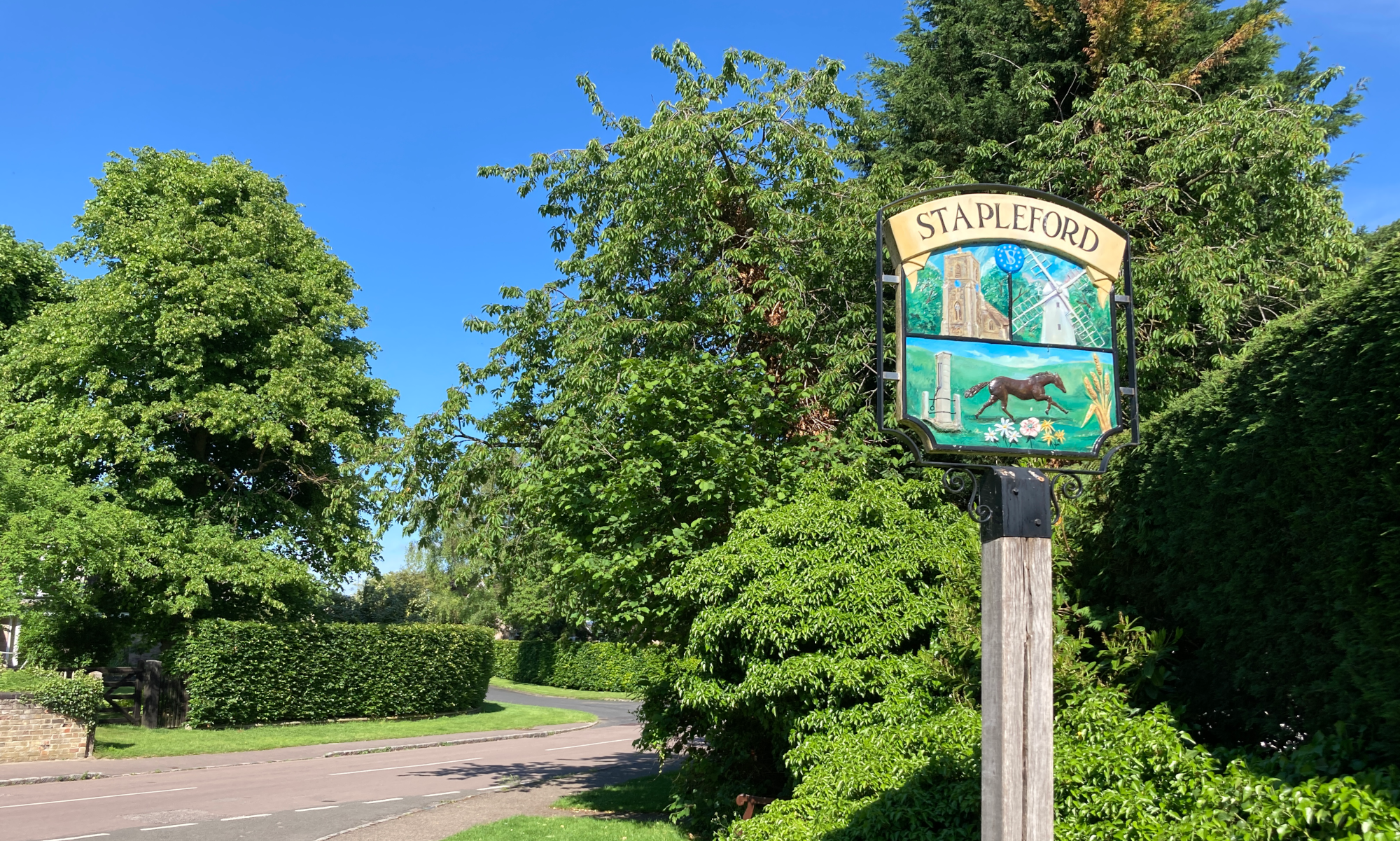Charlie Jennings was born 12.11.1903 in a cottage in Church St. opposite the Baptist Chapel
‘I was never wanted because I was illegitimate. My grandmother had a daughter born on 6th November 1904 and I was brought up as one of their children by my grandparents James and Caroline Jennings. My grandmother was a very rough woman and I had a very hard time. She used to clip me round my ears, she did this once when the sergeant of police (Salmon) called to ask me whether I had been involved in pushing down a wall in Bar Lane – which I hadn’t – and she hit me and drew blood from an earlobe. The sergeant warned her not to do it.’
‘I went to Stapleford School and transferred to the National School in Shelford when I was eleven because there were no senior classes at Stapleford. Visits of the dental officer were greatly feared. Sometimes after school on Monday afternoons I would run with my friends, Alf Rider, Alex Farnham and Stan Barker back to Stapleford to help Mr. Barker the butcher kill and prepare a bullock, a pig or a sheep in the slaughterhouse. Afterwards Mrs. Barker gave us a hot meal.’
Assistant teacher Mr. Howe taught gardening to some of the boys where they had eight plots. At age 13 I joined an older brother on the gardening staff at Magog Hill House then owned by Sir Harold Gray. My starting wage was one penny an hour for a 72 hour week 6am to 6pm six days a week i.e. 6 shillings a week. * I stayed there for 15 years under Lou Matlock the head gardener. During that time, Lady Gray decided to give the village a tennis court and purchased a plot of land near the pond beside what is now Greenfield Close from Albert Gumbley the blacksmith who also farmed a small area of land. I spent a month levelling the ground and laying the turf for the court and later became the groundsman at five shillings a week. In 2018 this would be equal to £22. Still not much for a 72 hour week.
Away from gardening, Charlie and his teenage friends spent many evenings playing billiards in the Institute and, quite illegally, crept into the building via a window they had left open to play cards on Sundays. Drew White who lived in the Schoolhouse and was custodian of The Institute got to hear about this and told Sergeant Salmon. Somehow the boys were warned and the next Sunday left a window open as usual but didn’t enter. Instead they hid and watched while the sergeant and caretaker searched the empty building. This became a big joke in the village. Charlie also played cricket and a photograph of him has survived in a group of men and women who took part in an Edwardian fancy dress cricket match circa 1926. In it Charlie is wearing a top hat at a rakish angle. He also became an enthusiastic bell ringer with his friends Walter Hoppitt and George Dean and he reckoned that he had rung peals in every church in South Cambridgeshire.
In 1927 Charlie married Gladys Irene Hogg and they first lived in a cottage in Bar Lane where their daughter Elsie was born.They then moved into a cottage which is now no. 16 Bury Road and after further moves ended up at no. 30 Bury Road.
In 1933 Charlie left Magog Hills House and went to work for the George brothers who had a florist and newspaper shop in Woollards Lane behind which were extensive greenhouses which were his responsibility. In addition to growing flowers and vegetables he often took over the newspaper round which included adjacent villages. He reckoned that the 28 years he worked for the George brothers were the best years of his life.
When World War Two broke out he joined the Home Guard and his certificate of proficiency shows he had passed tests in general knowledge, rifle, the 36 M grenade, battle craft and map reading. Many hours and nights were spent manning posts at Magog House, Shelford Bottom, various bridges and the old windmill. Shooting was practised on the rifle range at Barton.
After the death of the George brothers Charlie spent the last 18 years of his working life tending Reuben Ridgeon’s garden at Mingle Pen until he retired in 1975 at the age of 72. In retirement he continued to grow flowers and vegetables in his large garden. His wife died in 1991 and, thereafter, Charlie lived alone but was well supported by visits from his daughter and next door neighbour Jean White.
Other memories:
Fred Wisbey (verger 1902-34) hanged himself with his braces. Charlie alerted the police when he couldn’t get into Fred’s house next door. There sergeant broke a window and Charlie climbed in and found Fred hanging in his bedroom.
Stapleford milepost opposite The Grove said 50 miles to London. He thinks it is buried but is it?
A wall in Bar Lane was pushed down so the village policeman visited Charlie as a likely culprit but he was able to prove that he was bellringing at the time. Some boys from Shelford were responsible.
Some of the staff employed by the Grays:
Mr. Swanson Farm Steward
Albert Pearson Stud groom
Mr. Johnson Head Groom
Mr. Jarrett Chauffeur and handyman
Mr.Salmon Gamekeeper
Lew Matlock Head Gardener
Charlie Salmon Assistant Gardener
Miss Cathbold Ladies’ maid

